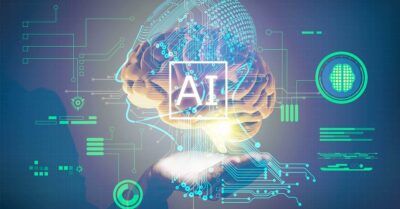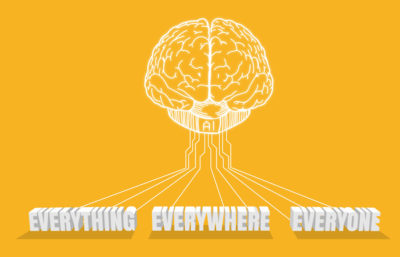Technology: Artificial Intelligence is referred to as the installment of human intelligence within machines, enabling the machines to think and perform actions in accordance to human traits that might include adaptation to certain situations and problem solving.
Artificial Intelligence: A modern approach
“Artificial intelligence a modern approach”, is the study of basic concepts of artificial intelligence in connection with modern concepts such as block chain technology, robotics and computer intelligence.
The approach has been discussed in detail in the book;

“Artificial intelligence a modern approach” by Stuart J. Russell and Peter Norvig.
Artificial Intelligence
Artificial Intelligence is referred to as the installment of human intelligence within machines, enabling the machines to think and perform actions in accordance to human traits that might include adaptation to certain situations and problem solving.
Algorithms-computer implementable instructions are the basis of structural formation of AI. Artificial Intelligence is based on the principle that human intelligence is programmed in such a way that robots and machines can mimic human functions to execute tasks.
“Artificial Intelligence may be defined as humanly and rational thinking and acting of computers.”
The idea of Artificial Intelligence sprung from Alan Turing’s paper “Computing Machinery and Intelligence” and the term “Artificial Intelligence” was first coined by John McCarthy in 1995.
McCarthy also organized Dartmouth conference in summer 1956 and stated AI as a separate field. John McCArthy is referred to as the father of ‘Artificial Intelligence’.
Research in AI has been focused more towards learning, intelligence, problem-solving, communication and forecasting.
Types of Artificial Intelligence
There are two broad categories of Artificial Intelligence, which can further be divided into different types.
Category-I
Narrow or Weak AI
It is the simplest category of AI designed to perform simplest of defined task. It can only process a single subset of cognitive abilities, hypothesis testing of mind. It is designed to operate within limited pre-defined range of functions, with the application of computational techniques to process and synthesize natural language and speech within pre-defined rules.
Cortana, Siri and Google Assistant are all examples of narrow AI.
General or Strong AI
It is the type of AI with human-level intelligence, and is capable of understanding the world as humans do and perform wide range of tasks.
Theoretically, strong AGI can perform all the tasks humans can do that would also include scenario-based thinking, reasoning and learning.
Considering the wide range of tasks AGI can perform, human workforce would become obsolete, rendering to the population’s inability to feed themselves and killing the sense of self-worth employment.
Super AI
It is kind of a hypothetical or fictional AI that surpasses human intelligence and can perform tasks that even the brightest of human being cannot perform, exceeding the cognitive skills of human beings.
According to surveys, most AI researchers expect the AI to reach to the human intelligence but there is only little or no expectations that AI would ever be able to surpass human intelligence.
Category-II
Reactive Machines
It is the most basic type of AI system, programmed to perform certain specific tasks, having no memory- based functions and do not evaluate tasks on the basis of past experiences. They only react to currently existing situation.
No matter the time or place, these machines are bound to act or behave the way they are programmed.
These machines have no concept of past or future with zero learning capabilities. IBM’s ‘Deep Blue’ is a chess playing machine which is an example of reactive machine.
Limited Memory AI
These are the machines which are capable of performing tasks just like reactive machines do.
In addition to it, these machines are also capable of learning from past experiences and make present decisions in accordance to those learning.
All the present day limited memory AI are fed with loads of data that would be used by the machines to solve future problems. Self-driving vehicles are the example of limited memory AI.
Theory of Mind AI
It may be defined as the ability of machines to understand different concepts related to human lives.
This might include knowledge, sense of power and sense of emotions or beliefs.
It has the ability to apply these concepts to itself and to other minds and understanding different ways of human life.
These machines are thought to be capable of understanding human assumptions and their thinking, and process them to learn and perform different tasks in accordance to them.
Self-Awareness AI
This concept of AI is based on the development and installment of self-awareness and self-consciousness within the machines.
Not much progress has been made in this regard because human consciousness is not yet fully understood and programming it into robots and machines is kind of impossible for now.
Applications of Artificial Intelligence
- The field of Artificial Intelligence have become so vast that it can be used in different fields of life such as healthcare, education, finance and economics, astronomy, travel and transport etc.

- AI can be used to make different marketing strategies, enabling the customers to find the desired product with great ease through e-commerce, making gameplay simulators, banking system security has improved through AI.
- Great progress have been seen in automotive industry, self-driving cars or rob cars are great examples. AI robotics in healthcare such as CT-scan and EKG machines can be used to diagnose different diseases and can be used to set accurate medicine dosage for patients.


COMMENTS